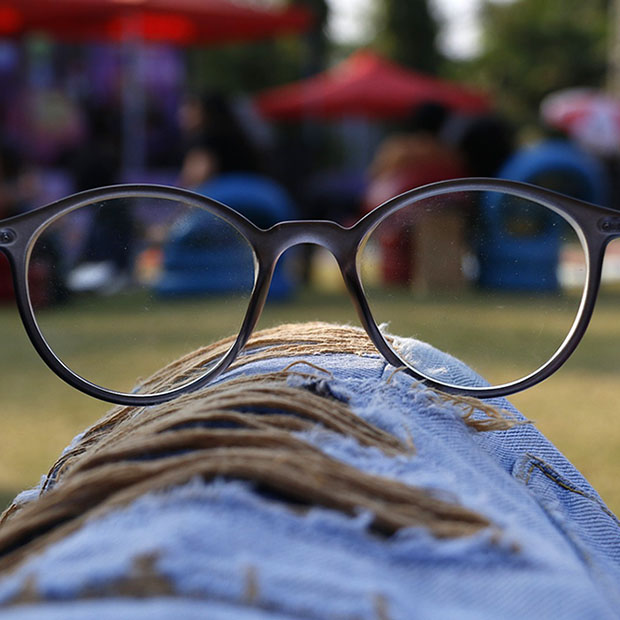All About Those Lenses

Let’s face it: glasses and contact lenses are pretty amazing.
For so many people around the world, two little pieces of clear material are the difference between living in a blurry, muddled world and being able to read, drive, and appreciate the details of their surroundings. How do these amazing devices do what they do?
Lens Curvature And The Shape Of The Eye
To understand how lenses correct vision, we first have to look at why vision needs correcting. In a normal eye, light passes through the cornea and lens and is focused onto the retina at the back, which sends the image up the optic nerve to the brain.
When someone is farsighted, it is because their eyes are shorter than normal, so the image from the lens overshoots the retina, making up-close objects blurry. When someone is nearsighted, their eyes are too long, making the image from the lens fall short, which results in distant objects looking blurry.
Glasses and contact lenses compensate for the shape of the eye by refocusing the image onto the retina. Farsighted people need lenses that are convex (thicker in the middle) to do the trick, while nearsighted people need lenses that are concave (thicker at the edges).
Lenses For Astigmatism
Another common reason people need glasses is astigmatism. Whereas the entire eyeball is the wrong shape for people who are nearsighted or farsighted, an astigmatism happens the cornea or the lens is irregularly shaped. This causes blurred vision at any distance, and often occurs together with nearsightedness or farsightedness. In order to correct astigmatism, lenses must be cylindrical in shape, rather than spherical.
Modern Lens Materials
In the good old days, glasses were made of regular glass, which meant they were thick, heavy, and incredibly fragile. Today, thanks to a number of advances in technology, we have a variety of options to suit different patients’ needs.
There are plastic lenses ranging from standard to high-index, which are lightweight and thinner than glass lenses. Polycarbonate lenses are great for kids because they are shatterproof. If you want the benefits of all the different lens materials, there are also composite lenses.
https://www.youtube.com/watch?v=BCH1SEYbrVA
If you’re more interested in contact lenses, those come in different materials too. Most commonly, soft silicone hydrogels and rigid gas-permeable plastic. The right type for you will depend on your prescription and what you find comfortable.
Need New Lenses?
Whether you’re a longtime glasses veteran, a master of contact lenses, or new to both, we’re here to help you find the right lenses to help you see clearly in comfort and style. Give us a call or stop by our practice to schedule your next appointment.
